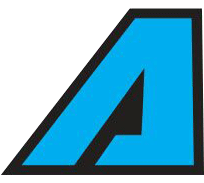
RC Basics: Machine Screws
RC Basics here with another tutorial, this one aimed at helping to decipher the arcane code behind the screws used in the world of hobby R/C. Start building your own kits from memory in record time! A lot of the same knowledge also applies to computer screws, so you can build a custom PC to match your crawler or on-road tourer. See, we do care about other hobbies.
Generally R/C uses hex-head screws. Regular cross-head screws also exist, but are generally not as common as the hex type. That means one of the most important and regularly used tools in your builder's arsenal should always be a variety of hex tools in different sizes.
Screws, especially those that sit flush in parts and expected to take a lot of stress, are countersunk – a word that means made to fit a conical hole in the surface you’re screwing into. A countersunk screw will sit flush with or below the surface of the surrounding material.
Screw heads come in several types, from flat heads to pan head or button head screws. Of these, flatheads are the most common (the naming conventions for these are kind of obvious).
Common materials for screws include molded screw-threaded plastic, stainless steel, and in certain cases where performance and weight savings are at an absolute must, titanium.
The M on the sizing of the machine screw refers to the diameter of the screw head in millimeters and is standard across the industry. For instance, an M3 screw would have a screw head diameter of 3mm (approx. 3/32”). You can measure this yourself quite easily with a slide ruler. Most of the screws used in hobby R/C in 1/10 and most other popular scale vehicles this size are of M3 or M2 in diameter.
The length varies depending on the application of the screw. Measurements for button head screws and flathead screws are therefore different; as a countersunk screw sits flush with the surface, the length of the screw usually refers to the height of the entire screw. A button head screw's length is measured without including the button head (i.e. from the base of the head to the bottom of the screw).
So using the system above for a standard M3x9mm flathead screw, the diameter of the flathead would be 3mm, with the screw total length being 9mm. Generally build guides and manuals from the larger brands will clearly mark the type of screws and their lengths needed, and the measurement system is an industry standard to help make building easier.
Got any more questions? Feel free to ask us anytime!

















